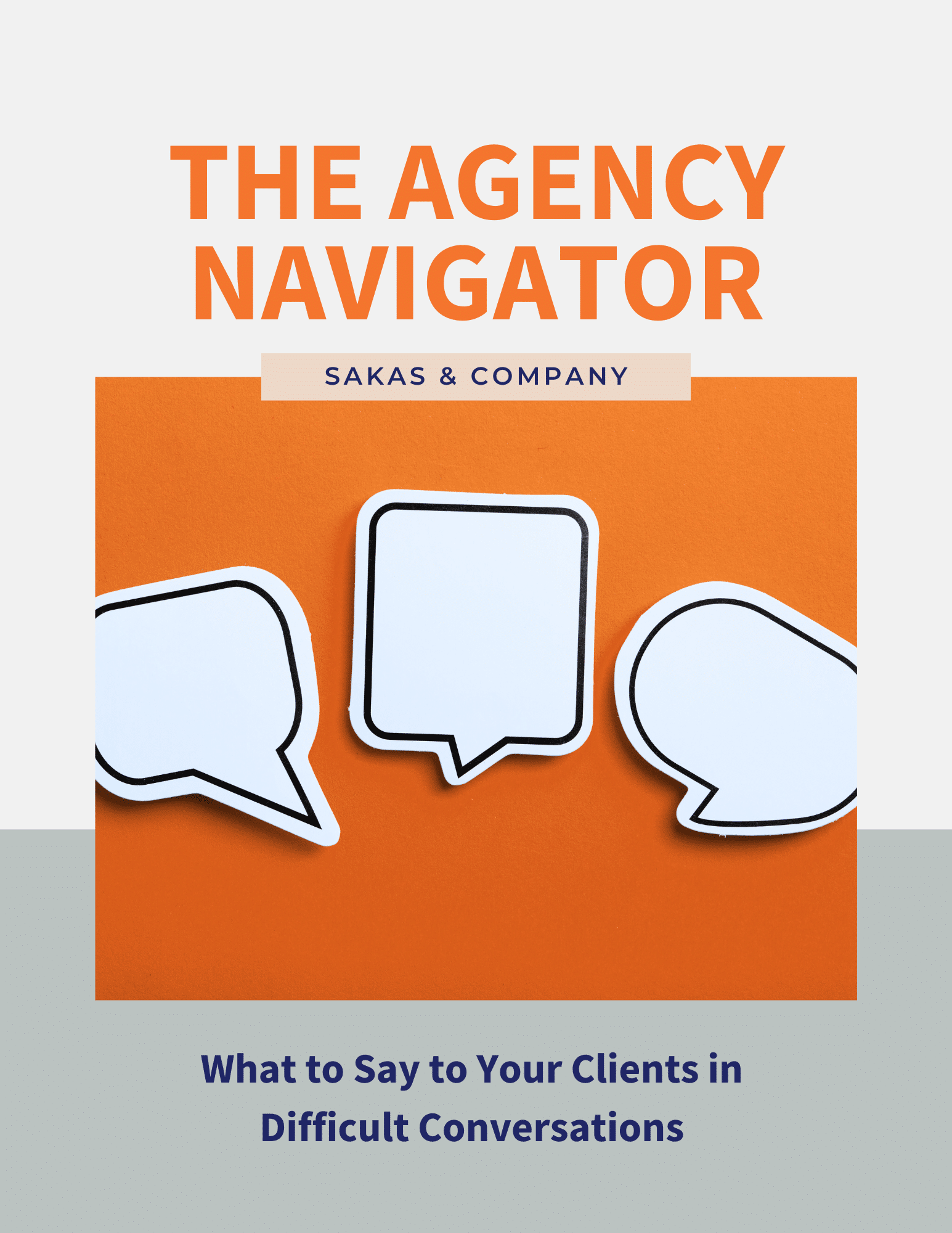When you hire a salesperson who doesn’t perform, that’s not good. But you also need to prepare your agency for things going really well.
A coaching client recently decided to hire a salesperson at her 12-person digital agency, as a way to grow her agency while reducing their dependence on their current client lineup. She asked me what factors she should consider in the process.
Hiring your first salesperson directly impacts two things—agency profits and agency workload. You also need to consider—is your sales compensation plan attractive to candidates?
You can identify this by analyzing things from three angles—how would the hiring impact agency profits, how would meeting sales quotas impact the agency’s project management process, and how much would the role appeal to a prospective salesperson?
Let’s assume you’re paying the salesperson a base salary plus a commission, the most common arrangement at digital agencies like yours. You’re going to create three analyses—they might be in same spreadsheet, but the goal is to answer three different questions.
Part 1: How does hiring a salesperson impact your agency’s profits?
If they meet quota, what does that do to your profits? (I say profits instead of revenues because you want to look at the net benefits, not the gross revenues.)
Create a spreadsheet to answer the question: “If the salespeople meet their goals and you pay certain commission rates on new and upsell business, how does it affect agency profits? And what’s the downside if they don’t meet quota?”
Likely, revenues will be up. But so will your expenses—fulfillment labor costs, but also the salesperson’s base salary, commission, and other compensation.
If you’re not paying a commission to yourself now, paying a salesperson will automatically slice into your margins. Consider if you need to raise prices to cover the commission…and their base salary.
You can use spreadsheet this to figure out what’s reasonable—you can play with base salary, commission rates, and quotas, among other factors.
Part 2: How does hiring a salesperson impact your agency’s PM process and agency workload?
Now, let’s look at how this impacts your agency’s workload. Meeting quota is great for growth, but you have to ensure your processes keep up.
Create a spreadsheet (or extend the existing one) to answer the question: “If the salespeople all meet their quota, can you fulfill the work? What changes would you need to make to staffing and to PM?”
In my client’s analysis, she projected that if the salesperson met quota, the agency would be fulfilling 32 retainers a month in two years. This would be a substantial increase compared to her current workload. It’s also more than my recommended client count (12-16 active clients).
That’s all potentially manageable, but imagine if she hadn’t done the analysis? If she’d hired the salesperson and they met quota, she’d find herself in a year or two with an overwhelming workload and no plan to handle it.
If you’re projecting lots of new clients, start building your stable of freelancers (and start meeting potential full-time hires) now, before it’s too late.
Part 3: Does the sales job pay enough to attract potential salespeople?
Looking at this from the agency’s perspective is important, but you also want to ensure the role’s attractive to potential salespeople. If they don’t benefit, too, no one’s going to work for you… or if they do, they won’t work for you very long.
There’s a joke that salespeople are “coin-operated”—that is, pay them and they perform; stop paying them and they stop performing. This tends to be true—good salespeople are good, in part, because they like making lots of money.
Many agency owners want to structure it so it’s 100% commission. That’s a good way to limit your downside, but it doesn’t attract the highest quality candidates—good salespeople have options. I recommend a mix of salary and commission. You can see how different approaches impact profits in the first analysis above.
For this analysis, let’s focus on what they’re making—salary, commission, and any other OTE (“on-track earnings”) compensation. In your spreadsheet, answer the question: “If they meet their quota, how much are they going to make? What’s their earning potential?”
A lot of agencies will describe sales roles based on the total compensation the salesperson could make based on meeting quota. That is, “You can make $100K in the first year and $200K in your second year.”
This “earnings potential” approach is good for recruiting, although you’ll want to ensure the numbers are realistic. If the salesperson meets quota in the first year but makes just $50K, they’re not going to stick around.
In your analysis, be sure to adjust for different commissions for new sales vs. upsells. I recommend doing a smaller percentage for upsells (a common factor is half the new-sale rate), since you want to encourage upsells but you also want to acknowledge that upsells are easier to get than entirely new dollars. And don’t be tempted to create a commission-only sales role.
Applying this when you hire a salesperson at your agency
Remember, hiring a salesperson isn’t just about your needs as the agency owner—look at this from your perspective (agency profits), your and your team’s perspective (agency workload), and the salesperson’s perspective (earnings potential).
Spreadsheet aside, don’t ignore cultural fit—don’t hire someone where there are clear red flags about being a bad fit, no matter how good they are at sales. Toxic employees are like vampires—they’ll “poison” the rest of the company and make good employees leave.
If you’re still on the fence about hiring a salesperson, start paying yourself a 10% commission now on new sales and see what it does to your profit margins. If it squeezes margins too much, you’ll want to make some changes before you hire a salesperson.
Question: What do you consider before hiring salespeople at your agency?


